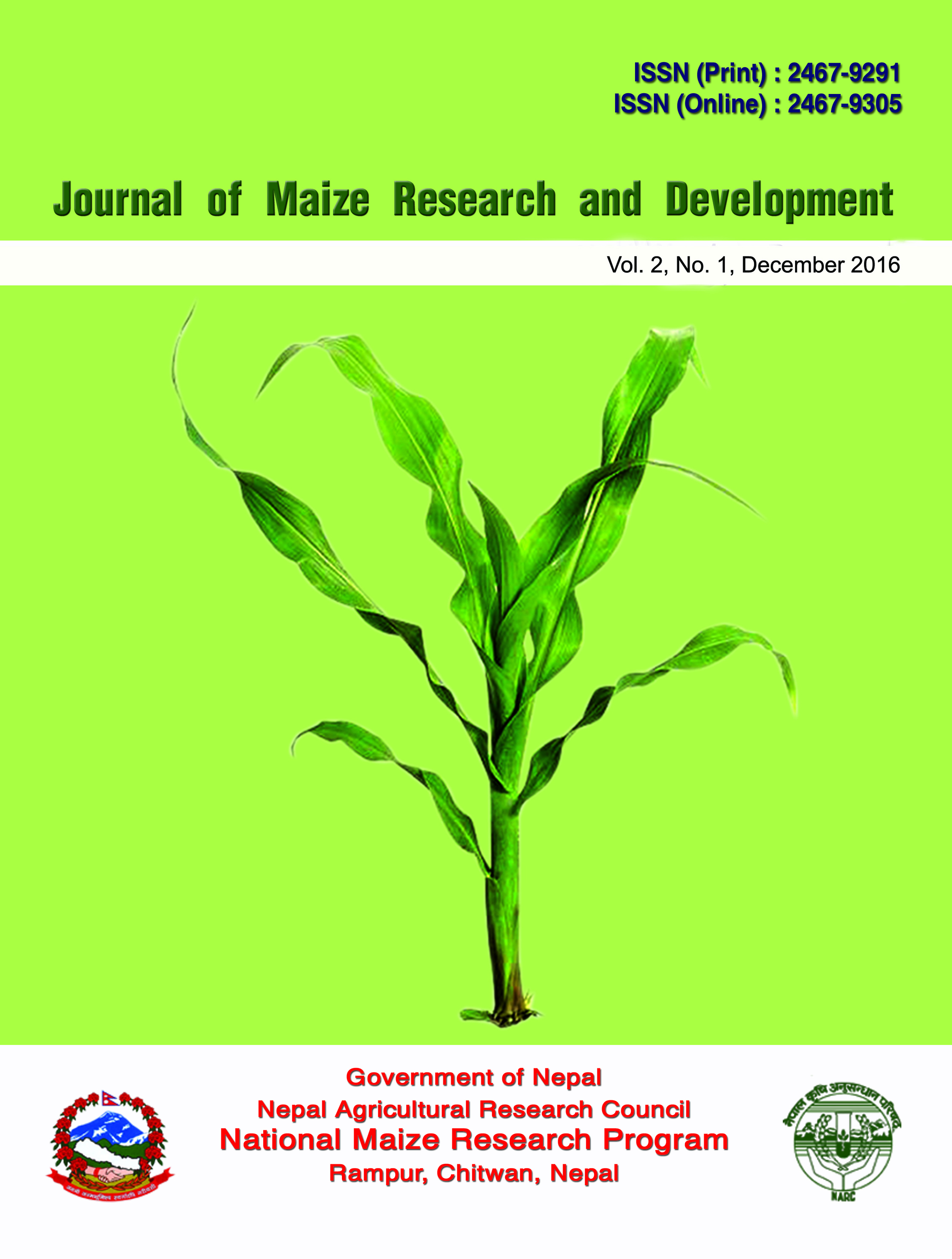Grain yield stability of early maize genotypes
DOI:
https://doi.org/10.3126/jmrd.v2i1.16219Keywords:
Early maize genotypes, grain yield, stabilityAbstract
The objective of this study was to estimate grain yield stability of early maize genotypes. Five early maize genotypes namely Pool-17, Arun1EV, Arun-4, Arun-2 and Farmer’s variety were evaluated using Randomized Complete Block Design along with three replications at four different locations namely Rampur, Rajahar, Pakhribas and Kabre districts of Nepal during summer seasons of three consecutive years from 2010 to 2012 under farmer’s fields. Genotype and genotype × environment (GGE) biplot was used to identify superior genotype for grain yield and stability pattern. The genotypes Arun-1 EV and Arun-4 were better adapted for Kabre and Pakhribas where as pool-17 for Rajahar environments. The overall findings showed that Arun-1EV was more stable followed by Arun-2 therefore these two varieties can be recommended to farmers for cultivation in both environments.




